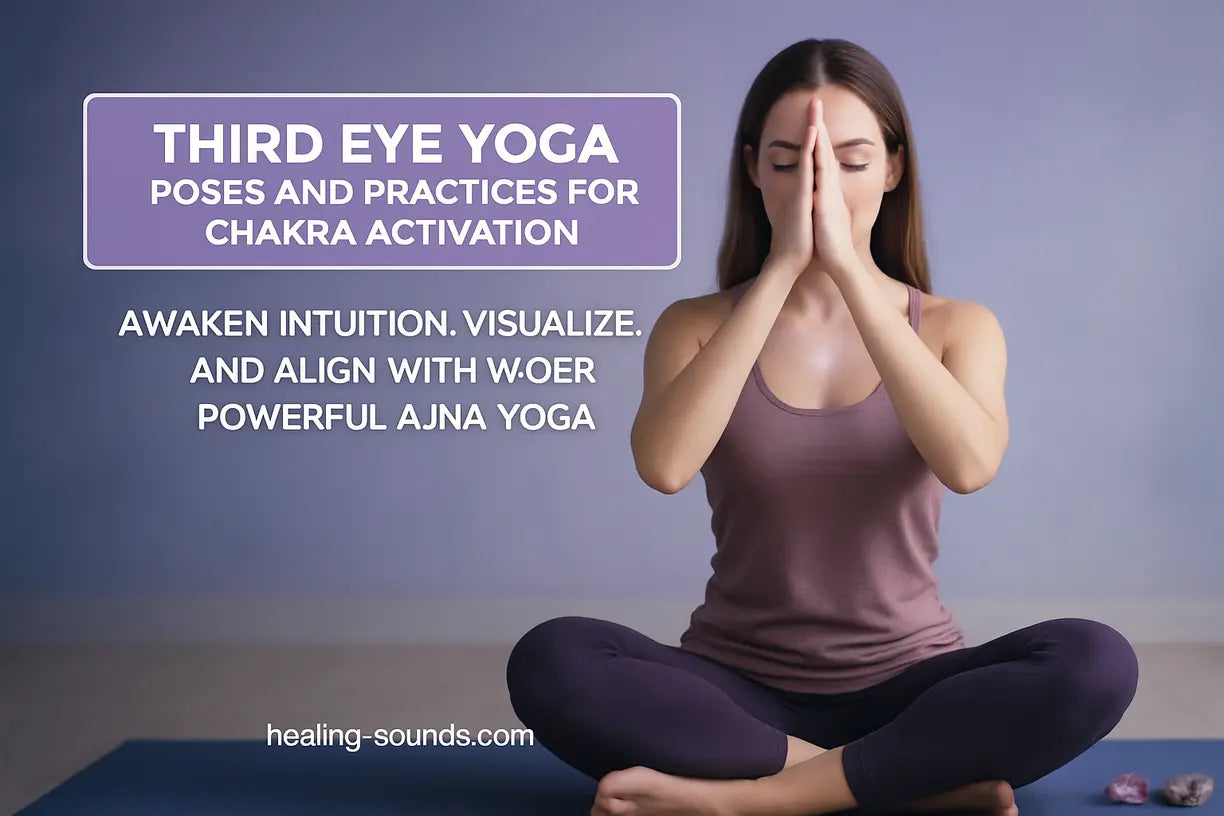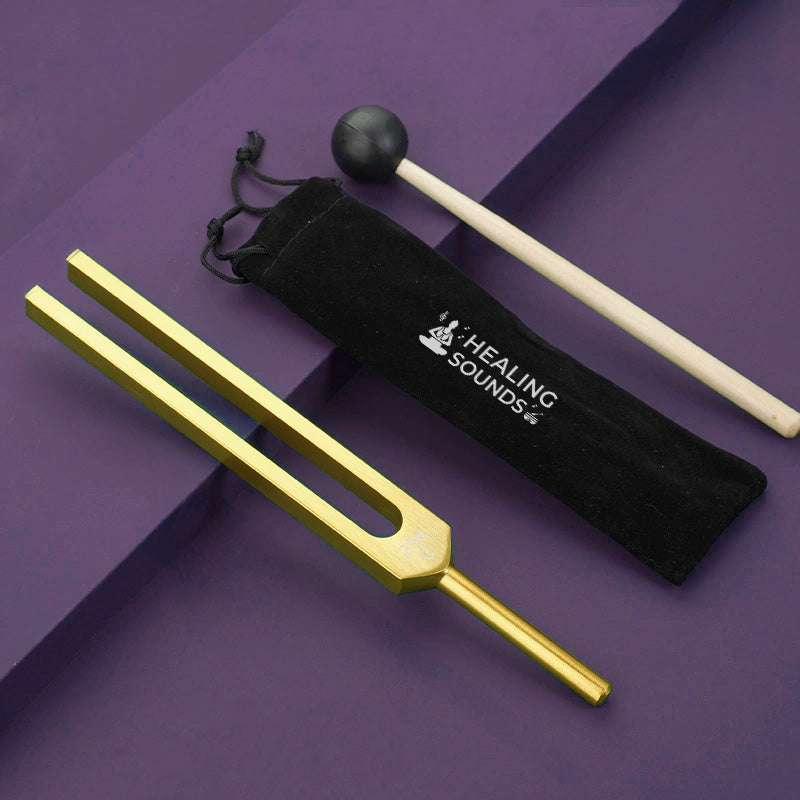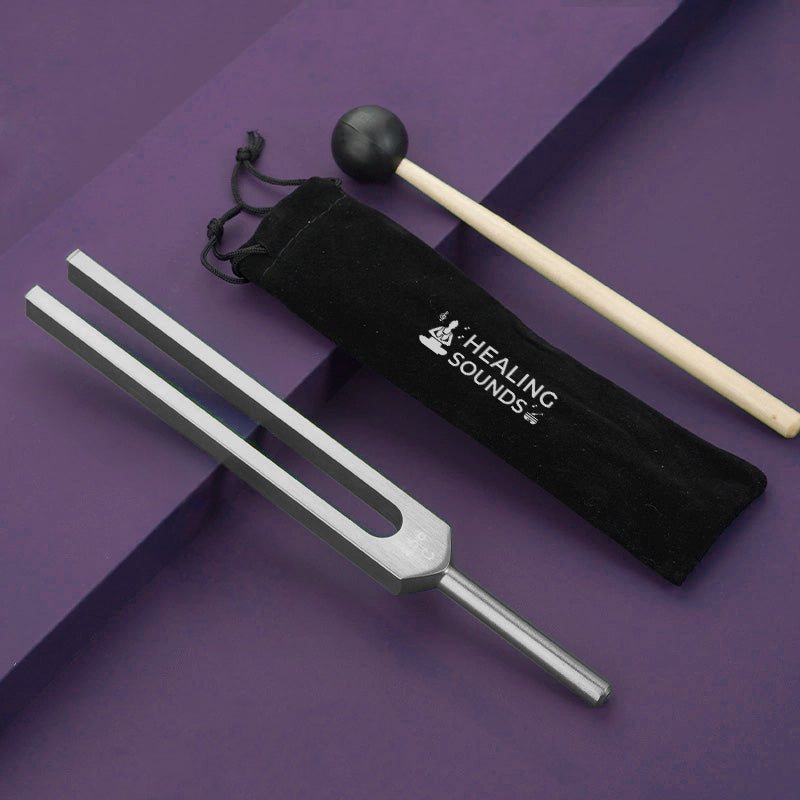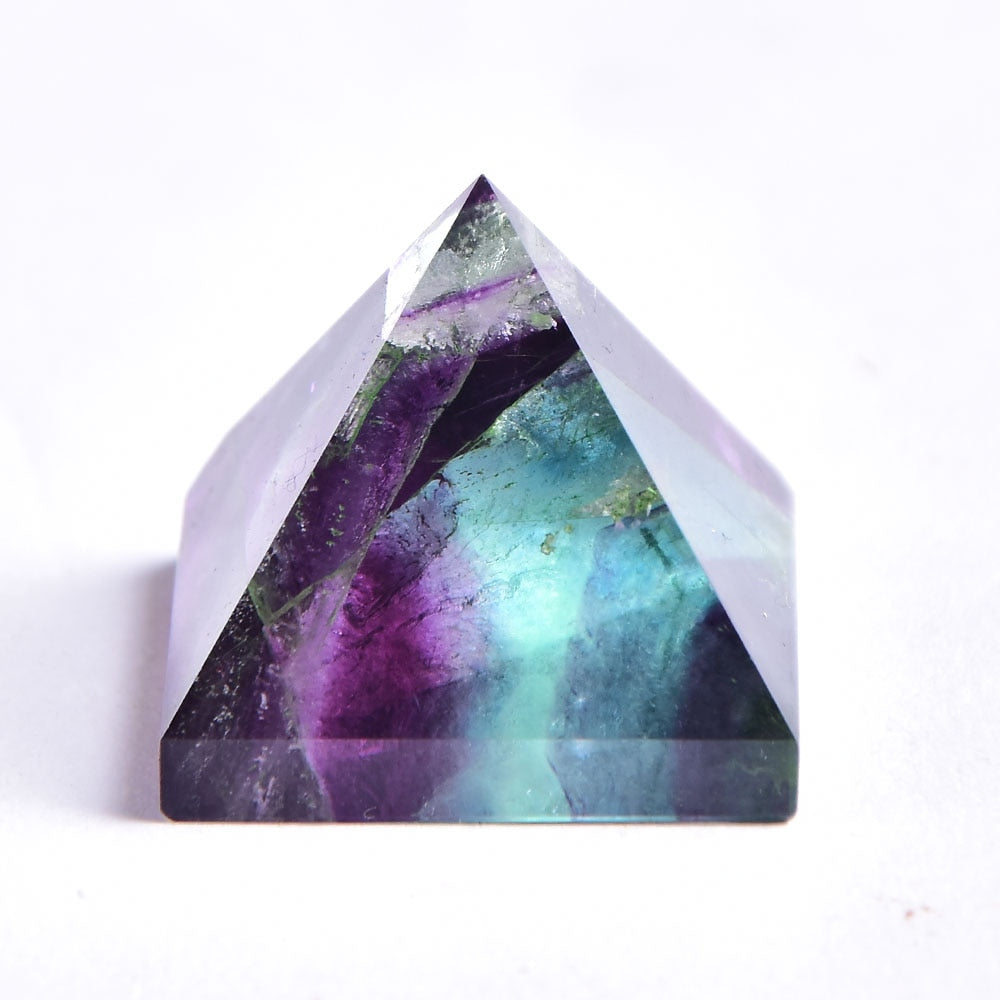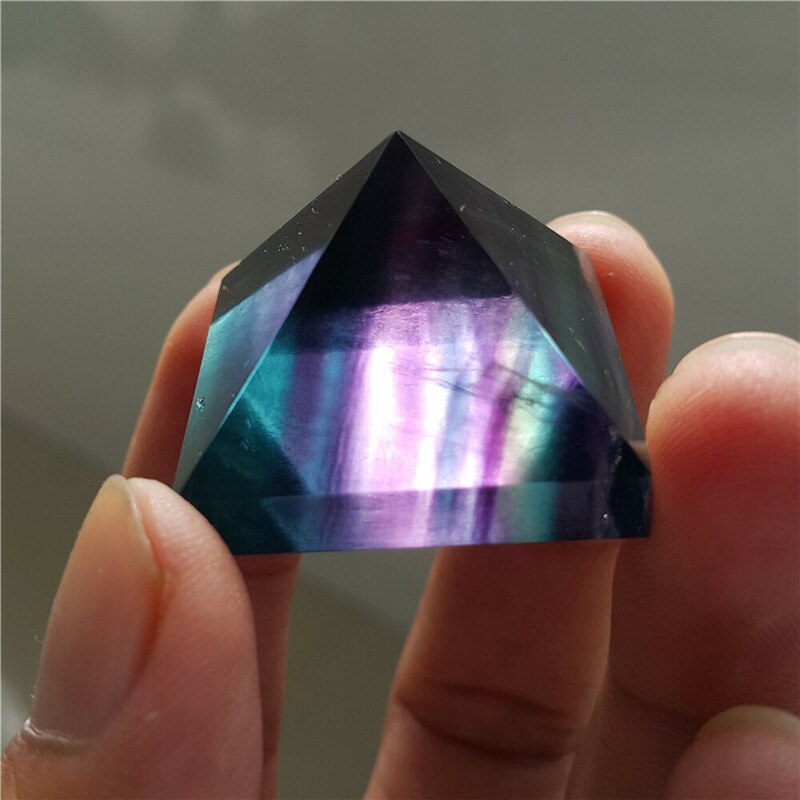Das Betreten des Yoga-Pfades des dritten Auges ist eine Einladung, tiefe Intuition freizusetzen, das Bewusstsein zu schärfen und sich mit einer inneren Weisheit zu verbinden, die über den Alltag hinausgeht. Für spirituell Suchende und engagierte Yoga-Praktizierende ist die Reise zur Aktivierung des Ajna-Chakras (des dritten Auges) eine transformierende Erfahrung, die zu mehr Klarheit und einem tieferen Verständnis des Selbst und des Universums führt. Dieser Leitfaden erkundet spezielle Yoga-Posen des dritten Auges , kraftvolle Ajna-Chakra-Mudras und effektive Übungen, die dieses kraftvolle Energiezentrum erwecken. Sie werden entdecken, wie diese alten Techniken den Weg zu spirituellem Wachstum, geschärfter Wahrnehmung und einer intuitiveren Lebensweise ebnen können.
Was ist das dritte Auge (Ajna Chakra) im Yoga?
In der Yoga-Tradition ist das dritte Auge , auch Ajna-Chakra (ausgesprochen „Agya“ oder „Ahj-na“) genannt, das sechste Hauptchakra oder Energiezentrum im feinstofflichen Körper. Es befindet sich in der Mitte der Stirn zwischen den Augenbrauen und gilt als Sitz der Intuition, der Erkenntnis, der Weisheit und der inneren Führung. Das Ajna-Chakra wird oft als zweiblättriger, meist indigoblauer Lotus dargestellt und symbolisiert die beiden Haupt-Nadis (Energiekanäle) Ida und Pingala, die hier zusammenlaufen, bevor sie zum Kronenchakra aufsteigen. Wenn dieses Chakra ausgeglichen und geöffnet ist, ermöglicht es uns, über die physischen Sinne hinaus zu sehen, subtile Energien wahrzunehmen und höhere Bewusstseinszustände zu erreichen. Es steuert unsere Fähigkeit, die Wahrheit zu erkennen, weise Entscheidungen zu treffen und uns mit unserer spirituellen Bestimmung zu verbinden. Die Aktivierung des Ajna-Chakras durch Übungen wie Yoga-Stellungen des dritten Auges und Meditation kann zu einem tiefen Gefühl der Klarheit und einer tieferen Verbindung zu unserem inneren Wissen führen.
Die transformativen Vorteile der Aktivierung Ihres dritten Auges
Die Aktivierung Ihres Stirnchakras durch gezieltes Stirnchakra-Yoga bietet zahlreiche Vorteile, die sich auf jeden Aspekt Ihres Lebens auswirken können. Es ist mehr als nur ein spirituelles Konzept; es ist ein Weg zu einem erfüllteren und einsichtsvolleren Leben. Hier sind einige der wichtigsten transformativen Effekte:
- Verbesserte Intuition: Dies ist vielleicht der bekannteste Vorteil. Ein ausgeglichenes Ajna-Chakra steigert Ihre intuitiven Fähigkeiten, sodass Sie Situationen klarer wahrnehmen und Ihrer inneren Führung leichter vertrauen können.
- Verbesserte Klarheit und Konzentration: Durch die Stimulation des dritten Auges können Sie geistigen Nebel und Verwirrung durchbrechen, was zu verbesserter geistiger Klarheit, Konzentration und Fokus führt.
- Erhöhtes Selbstbewusstsein: Die Aktivierung des dritten Auges fördert ein tieferes Verständnis Ihrer selbst – Ihrer Gedanken, Emotionen, Muster und wahren Wünsche. Dieses Selbstbewusstsein ist entscheidend für persönliches Wachstum.
- Verbesserte Vorstellungskraft und Kreativität: Das Ajna-Chakra ist mit Vorstellungskraft und Visualisierung verbunden. Seine Öffnung kann kreatives Potenzial freisetzen und zu neuen Ideen inspirieren.
- Bessere Entscheidungsfindung: Mit verbesserter Intuition und Klarheit fällt es Ihnen leichter, Entscheidungen zu treffen, die mit Ihrem höchsten Wohl im Einklang stehen.
- Spirituelles Erwachen: Für viele ist die Arbeit mit dem dritten Auge ein Eckpfeiler der spirituellen Entwicklung, der zu tiefen Erkenntnissen, einem Gefühl der Verbundenheit und einer tieferen Beziehung zum göttlichen oder universellen Bewusstsein führt.
- Weniger Angst und Stress: Übungen, die das Ajna-Chakra ausgleichen, wirken oft beruhigend auf das Nervensystem und helfen, Angst und Stress abzubauen, indem sie inneren Frieden fördern. Mehr über die philosophischen Grundlagen der Chakren erfahren Sie beispielsweise im Chakren-Leitfaden des Yoga Journals .
Die Ausübung von Yoga für das dritte Auge ist eine Investition in Ihr allgemeines Wohlbefinden und ebnet den Weg für ein Leben mit größerer Weisheit, Einsicht und Zielstrebigkeit.
Wichtige Yoga-Posen für das dritte Auge zur Aktivierung des Ajna-Chakras
Bestimmte Yoga-Asanas (Stellungen) können das Ajna-Chakra unglaublich effektiv stimulieren und ausgleichen. Diese Yoga-Stellungen für das dritte Auge beinhalten oft sanften Druck oder Konzentration auf die Stirnpartie oder Umkehrhaltungen, die die Durchblutung des Kopfes fördern. Hier sind einige wichtige Stellungen, die Sie in Ihre Praxis zur Aktivierung des dritten Auges integrieren können:

1. Stellung des Kindes (Balasana) mit der Stirn auf der Matte
Die Stellung des Kindes ist eine beruhigende und erdende Haltung, die das dritte Auge sanft stimuliert. So wird es geübt: Knien Sie sich mit den großen Zehen auf den Boden und setzen Sie sich auf die Fersen (wenn es bequem ist, ansonsten halten Sie die Hüften angehoben). Beugen Sie sich nach vorne und legen Sie Ihren Oberkörper zwischen oder auf Ihre Oberschenkel. Strecken Sie Ihre Arme nach vorne oder legen Sie sie mit den Handflächen nach oben neben Ihren Körper. Legen Sie Ihre Stirn sanft auf die Matte und üben Sie dabei leichten Druck auf den Punkt des dritten Auges aus. Atmen Sie tief ein und halten Sie die Position für 5-10 Atemzüge. Diese Stellung hilft, das Gehirn zu beruhigen und Stress abzubauen.
2. Der herabschauende Hund (Adho Mukha Svanasana)
Diese belebende Pose fördert die Durchblutung des Gehirns, was das dritte Auge stimulieren kann. So wird's gemacht: Beginnen Sie auf Händen und Knien. Atmen Sie aus und heben Sie Ihre Hüften nach oben und hinten, sodass Ihr Körper ein umgekehrtes „V“ bildet. Halten Sie Ihre Hände schulterbreit und Ihre Füße hüftbreit auseinander. Drücken Sie Ihre Fersen sanft in Richtung Boden (sie müssen sich nicht berühren). Entspannen Sie Kopf und Nacken und richten Sie Ihren Blick auf Ihren Nabel oder zwischen Ihre Füße. Halten Sie die Position für 5–8 Atemzüge und spüren Sie, wie die Energie in Richtung Ihres Kopfes fließt .
3. Unterstützter Schulterstand (Salamba Sarvangasana)
Der Schulterstand ist eine kraftvolle Umkehrung, die das Gehirn sowie die Hypophyse und Zirbeldrüse, die mit dem dritten Auge verbunden sind, reichlich mit Blut versorgt. Achtung: Dies ist eine fortgeschrittene Pose und sollte unter Anleitung erlernt werden, besonders wenn Sie Nacken-, Schulter- oder Blutdruckprobleme haben. Übungsanleitung (vereinfachte Methode): Legen Sie sich mit den Armen neben dem Körper und den Handflächen nach unten auf den Rücken. Beugen Sie die Knie und heben Sie die Füße vom Boden ab, sodass Ihre Knie in Richtung Brust ziehen. Stützen Sie Ihren unteren Rücken mit den Händen und heben Sie Ihre Hüften und Beine langsam zur Decke. Halten Sie Ihre Ellbogen so nah wie möglich zusammen. Ihr Gewicht sollte auf Ihren Schultern und Oberarmen ruhen, nicht auf Ihrem Nacken. Blicken Sie in Richtung Brust. Halten Sie die Position zunächst für einige Atemzüge und steigern Sie die Dauer allmählich. Um herunterzukommen, senken Sie langsam Ihre Beine und rollen Sie Ihre Wirbelsäule zurück auf die Matte. Diese Pose ist dafür bekannt, das Nervensystem zu beruhigen und den Hormonhaushalt zu fördern.
4. Kopf-Knie-Vorwärtsbeuge (Janu Sirsasana)
Diese Pose beruhigt das Gehirn und hilft, leichte Depressionen zu lindern, während sie gleichzeitig Leber und Nieren stimuliert. Die Vorwärtsbeuge fördert die Selbstbeobachtung und die Konzentration auf das dritte Auge. So wird sie ausgeführt: Setzen Sie sich mit nach vorne gestreckten Beinen hin. Beugen Sie Ihr rechtes Knie und legen Sie die Sohle Ihres rechten Fußes an Ihre linke Innenseite des Oberschenkels. Atmen Sie ein und strecken Sie Ihre Wirbelsäule. Atmen Sie aus und beugen Sie sich von der Hüfte aus über Ihr linkes Bein nach vorne, wobei Sie nach Ihrem Fuß, Knöchel oder Schienbein greifen. Lassen Sie Ihre Stirn in Richtung Schienbein wandern. Halten Sie die Position für 5–8 Atemzüge und wiederholen Sie die Übung auf der anderen Seite. Dies fördert Flexibilität und Selbstbeobachtung .
5. Sitzende Meditationshaltung (Sukhasana oder Padmasana) mit Fokus auf das dritte Auge
Jede bequeme Meditationshaltung, wie die bequeme Sitzhaltung (Sukhasana) oder der Lotussitz (Padmasana), kann zur Aktivierung des dritten Auges genutzt werden, indem Sie Ihre Aufmerksamkeit darauf lenken. So üben Sie: Setzen Sie sich bequem mit geradem Rücken hin. Schließen Sie die Augen und richten Sie Ihre Aufmerksamkeit sanft auf den Punkt zwischen Ihren Augenbrauen. Sie können sich ein indigoblaues Licht vorstellen oder einfach die Empfindung in diesem Bereich spüren. Atmen Sie natürlich und halten Sie diese Konzentration 5–20 Minuten lang aufrecht. Diese Übung fördert direkt innere Aufmerksamkeit und Intuition .
Denken Sie daran, auf Ihren Körper zu hören und erzwingen Sie niemals eine Pose. Beständigkeit und achtsames Üben sind der Schlüssel zum Erwecken des Ajna-Chakras durch Yoga des dritten Auges .
Kraftvolle Mudras für das Erwachen des dritten Auges
Mudras sind symbolische Handgesten, die im Yoga und in der Meditation verwendet werden, um Energiefluss und Bewusstsein zu lenken. Bestimmte Mudras sind besonders wirksam, um das Ajna-Chakra zu stimulieren und zu erwecken. Die Integration dieser Mudras in Ihre Yoga-Praxis des dritten Auges kann Ihren Weg zu gesteigerter Intuition und Klarheit deutlich verbessern.
Ajna Mudra (Mudra des dritten Auges) oder Shambhavi Mudra (Blick in die Mitte der Augenbrauen)
Obwohl sie oft synonym oder in Kombination verwendet werden, liegt der Schwerpunkt auf der Stimulation der Region des dritten Auges.
Ajna Mudra (Geste für das dritte Auge): Bei diesem Mudra wird typischerweise mit dem Ringfinger der rechten Hand der Punkt des dritten Auges (zwischen den Augenbrauen) sanft berührt oder leichter Druck darauf ausgeübt. Dies kann während der Meditation in einer bequemen Sitzposition erfolgen. Der leichte Druck hilft, dieses Energiezentrum bewusst wahrzunehmen.

Shambhavi Mudra (Blick auf die Mitte der Augenbrauen): Dies ist eine kraftvolle Kriya (Yogik-Technik), die das Ajna-Chakra direkt stimuliert. So praktizieren Sie Shambhavi Mudra: 1. Setzen Sie sich in eine bequeme Meditationshaltung mit aufrechter Wirbelsäule und auf den Knien ruhenden Händen in Jnana Mudra (Daumen und Zeigefinger berühren sich).2. Schließen Sie sanft Ihre Augen.3. Richten Sie nun Ihren inneren Blick mit noch immer geschlossenen Augen (oder leicht geöffnet, wenn es anfangs angenehmer ist, aber traditionell geschlossen) nach oben und innen und konzentrieren Sie sich auf den Punkt zwischen Ihren Augenbrauen – die Stelle des dritten Auges.4. Versuchen Sie, diesen fokussierten Blick beizubehalten, ohne Ihre Augenmuskeln zu überanstrengen. Es könnte sich anfangs etwas ungewohnt anfühlen.5. Atmen Sie normal und halten Sie den Blick so lange wie möglich, beginnend mit ein oder zwei Minuten und steigern Sie die Dauer mit etwas Übung.6. Um den Blick zu lösen, bringen Sie Ihren Blick sanft wieder in die normale Position, halten Sie die Augen noch einige Augenblicke geschlossen und öffnen Sie sie dann langsam. Vorteile: Shambhavi Mudra soll den Geist beruhigen, die Konzentration verbessern, Stress und Angst reduzieren und das Ajna-Chakra direkt erwecken, was zu gesteigerter Intuition und spiritueller Einsicht führt. Es ist eine hochgeschätzte Praxis zur Aktivierung des dritten Auges .
Jnana Mudra (Mudra des Wissens)
Jnana Mudra ist zwar nicht ausschließlich für das dritte Auge gedacht, wird aber häufig bei Meditationen mit dem dritten Auge verwendet, da es Weisheit, Aufnahmefähigkeit und Ruhe fördert und so eine ideale innere Umgebung für die Arbeit mit dem Ajna-Chakra schafft. So wird es geübt: Berühren Sie mit der Spitze Ihres Zeigefingers die Spitze Ihres Daumens, während Sie die anderen drei Finger gerade und entspannt halten. Legen Sie Ihre Hände mit den Handflächen nach oben (für Aufnahmefähigkeit) oder unten (für Erdung) auf Ihre Knie. Vorteile: Dieses Mudra verbessert Konzentration, Gedächtnis und Wissen und hilft, den Geist zu beruhigen, wodurch intuitive Erkenntnisse über das dritte Auge leichter zugänglich werden.
Wenn Sie diese Mudras, insbesondere Shambhavi Mudra, in Ihre tägliche Meditation oder als Teil Ihrer Yoga-Routine für das dritte Augenchakra einbauen, kann dies Ihre Verbindung zu Ihrer inneren Weisheit erheblich vertiefen.
Kurztipps zur Mudra-Praxis:
- Üben Sie an einem ruhigen und angenehmen Ort.
- Behalten Sie einen entspannten Körper und eine sanfte Atmung bei.
- Seien Sie geduldig und konsequent; die Wirkung stellt sich mit der Zeit ein.
- Vermeiden Sie Anstrengungen, insbesondere bei augenfokussierten Mudras wie Shambhavi.
Integration von Atemarbeit (Pranayama) und Meditation
Neben Asanas und Mudras sind spezielle Atemtechniken (Pranayama) und konzentrierte Meditation wichtige Bestandteile des Yoga für das dritte Auge . Sie spielen eine entscheidende Rolle bei der Reinigung der Energiekanäle und der Lenkung des Bewusstseins auf das Ajna-Chakra.
Nadi Shodhana (abwechselnde Nasenatmung)
Nadi Shodhana ist ein hervorragendes Pranayama zum Ausgleichen der Ida- und Pingala-Nadis, der beiden primären Energiekanäle, die sich im Ajna-Chakra treffen. Das Ausbalancieren dieser Kanäle ist wichtig, um das dritte Auge zu erwecken. So wird es geübt: 1. Setzen Sie sich bequem mit gerader Wirbelsäule hin. Verwenden Sie Ihre rechte Hand: Falten Sie Zeige- und Mittelfinger in Richtung Ihrer Handfläche (Vishnu Mudra). Sie verwenden Ihren Daumen, um das rechte Nasenloch zu schließen, und Ihren Ringfinger, um das linke zu schließen.2. Schließen Sie Ihr rechtes Nasenloch mit Ihrem Daumen und atmen Sie vollständig durch Ihr linkes Nasenloch aus.3. Atmen Sie tief und langsam durch Ihr linkes Nasenloch ein.4. Schließen Sie Ihr linkes Nasenloch mit Ihrem Ringfinger, lösen Sie Ihren Daumen vom rechten Nasenloch und atmen Sie langsam durch das rechte Nasenloch aus.5. Atmen Sie tief durch Ihr rechtes Nasenloch ein.6. Schließen Sie Ihr rechtes Nasenloch mit Ihrem Daumen, lösen Sie Ihren Ringfinger vom linken Nasenloch und atmen Sie durch das linke aus. Damit ist eine Runde abgeschlossen.7. Machen Sie 5–10 Runden lang weiter und achten Sie darauf, dass Ihre Atmung ruhig, langsam und gleichmäßig ist. Vorteile: Nadi Shodhana beruhigt den Geist, reduziert Ängste, gleicht das Nervensystem aus und bereitet den Geist auf tiefe Meditation vor, wodurch es die Aktivierung des dritten Auges stark fördert.
Meditation des dritten Auges (Trataka-Variation oder Visualisierung)
Konzentrierte Meditation ist der Schlüssel. Sie können Trataka (ruhiges Schauen) auf eine Kerzenflamme praktizieren und diese Flamme dann am dritten Auge verinnerlichen oder Visualisierungstechniken anwenden. So üben Sie (Visualisierung): 1. Setzen Sie sich in eine bequeme Meditationshaltung. Schließen Sie die Augen.2. Konzentrieren Sie sich auf Ihren Atem und lassen Sie ihn ruhig und rhythmisch werden.3. Lenken Sie Ihren Fokus sanft auf den Punkt zwischen Ihren Augenbrauen – Ihr drittes Auge.4. Visualisieren Sie an diesem Punkt ein strahlendes indigoblaues Licht oder vielleicht eine sich öffnende Lotusblume.5. Stellen Sie sich beim Einatmen vor, wie dieses Licht heller wird und sich ausdehnt. Spüren Sie beim Ausatmen, wie sich Spannungen oder Blockaden auflösen.6. Halten Sie Ihren Fokus hier und lassen Sie Erkenntnisse oder Empfindungen ohne Wertung aufkommen.7. Meditieren Sie 10–20 Minuten oder länger, je nachdem, was Ihnen angenehm ist. Vorteile: Diese Art der Meditation stimuliert direkt das Ajna-Chakra, stärkt die Intuition, fördert die geistige Klarheit und vertieft die spirituelle Verbindung . Untersuchungen zeigen immer wieder, dass Meditation erhebliche Vorteile für die geistige und körperliche Gesundheit mit sich bringen kann, was den Prozess der Öffnung des dritten Auges unterstützt.
Sehen Sie sich dieses Video einer geführten Yoga-Sitzung zum dritten Augenchakra an, die einige dieser Prinzipien beinhaltet:
Indem Sie diese Pranayama- und Meditationstechniken konsequent in Ihre Yoga-Routine für das dritte Auge integrieren, schaffen Sie eine kraftvolle Synergie, die Ihr Energiesystem reinigt, Ihren Geist beruhigt und nach und nach die tiefe Weisheit Ihres Ajna-Chakras erweckt.
Tools zur Verbesserung Ihrer Yoga-Praxis für das dritte Auge
Während der Kern des Yoga für das dritte Auge in Posen, Mudras, Atmung und Meditation liegt, können bestimmte Hilfsmittel Ihre Praxis unterstützen und vertiefen und dazu beitragen, eine Umgebung zu schaffen, die der Chakra-Aktivierung und intuitiven Entwicklung förderlich ist.
852 Hz Solfeggio-Stimmgabel zur Heilung – spirituelles Erwachen
$39.90 $59.90
Entfesseln Sie tiefere Intuition und unterstützen Sie Yoga für das dritte Auge mit der 852-Hz-Stimmgabel, perfekt für die Chakra-Aktivierung und Klarheit.
Produkt entdeckenKlangheilmittel wie die 852 Hz Solfeggio-Stimmgabel werden speziell mit dem Stirnchakra in Verbindung gebracht. Die Frequenz von 852 Hz soll die Intuition wecken, die Rückkehr zur spirituellen Ordnung erleichtern und mentale Konditionierungen auflösen, die die innere Sicht trüben können. Die Verwendung dieser Stimmgabel vor oder während der Meditation kann helfen, Ihre Energie auf die Frequenz des Ajna-Chakras einzustimmen und so den Zugang zu dessen Eigenschaften zu erleichtern.
Unterstützen Sie Ihre Reise: Tools für tiefere Einblicke
Verstärken Sie Ihre Yoga-Praxis für das dritte Auge – verwenden Sie diese Fluoritpyramide für Klarheit, Aura-Reinigung und verbesserte meditative Konzentration. Mehr erfahren ➔
$24.90
$35.90
Tragen Sie dieses beruhigende Amethystarmband beim Yoga, um täglich Frieden und Intuition zu fördern und das Gleichgewicht des Ajna-Chakras zu unterstützen. Mehr erfahren ➔
Kristalle sind auch beliebte Hilfsmittel im Yoga für das dritte Auge . Fluorit, insbesondere violetter oder indigoblauer Fluorit, ist bekannt für seine Fähigkeit, geistige Klarheit, Konzentration und psychisches Bewusstsein zu fördern. Eine kleine Fluorit-Reinigungspyramide in Ihrem Übungsraum oder während der Meditation kann helfen, geistigen Nebel zu lösen und intuitive Energien zu verstärken. Amethyst ist ein weiterer kraftvoller Kristall, der mit dem dritten Auge und dem Kronenchakra in Verbindung gebracht wird. Er fördert Ruhe, spirituelle Einsicht und Intuition. Das Tragen eines Amethyst-Perlenarmbands kann Sie ständig an Ihre Absicht erinnern und dazu beitragen, Ihr Ajna-Chakra den ganzen Tag über im Gleichgewicht zu halten.
Obwohl diese Tools hilfreich sind, sollten Sie nicht vergessen, dass die wahre Kraft der Aktivierung des dritten Auges durch konsequentes Üben und innere Arbeit entsteht.
Anzeichen dafür, dass sich Ihr drittes Auge öffnet
Wenn Sie regelmäßig Yoga für das dritte Auge und ähnliche Übungen praktizieren, bemerken Sie möglicherweise subtile oder deutliche Veränderungen, die darauf hinweisen, dass Ihr Ajna-Chakra aktiver und ausgeglichener wird. Diese Anzeichen können körperlicher, geistiger, emotionaler oder spiritueller Natur sein.

Zu den üblichen Erfahrungen gehören:
- Gesteigerte Intuition und Ahnung: Möglicherweise stellen Sie fest, dass Sie Dinge „einfach wissen“, ohne dass es eine logische Erklärung dafür gibt, oder dass Sie von einem stärkeren Bauchgefühl geleitet werden.
- Verbesserte Klarheit und Einsicht: Situationen, die zuvor verwirrend erschienen, können klarer werden. Sie erhalten möglicherweise plötzliche Einblicke in Probleme oder verstehen komplexe Konzepte leichter.
- Erhöhte Lichtempfindlichkeit: Manche Menschen berichten, dass sie lichtempfindlicher werden oder Auren oder subtile Energien um Menschen oder Gegenstände herum wahrnehmen.
- Druck oder Kribbeln in der Stirn: Eine häufige körperliche Empfindung ist ein Druckgefühl, Kribbeln, Wärme oder leichtes Pulsieren im Bereich zwischen den Augenbrauen.
- Lebhafte oder klare Träume: Ihr Traumleben kann lebendiger und bedeutungsvoller werden oder Sie erleben möglicherweise klare Träume (sich bewusst, dass Sie träumen).
- Größeres Selbstbewusstsein: Sie können ein tieferes Verständnis Ihrer eigenen Gedanken, Gefühle und Motivationen entwickeln.
- Ein Gefühl der Losgelöstheit vom Ego: Sie fühlen sich möglicherweise weniger an materiellen Ergebnissen und mehr mit einem größeren Sinn für Zielstrebigkeit verbunden.
- Zunehmende Synchronizitäten: Wenn Sie in Ihrem täglichen Leben mehr bedeutsame Zufälle oder Synchronizitäten bemerken, kann dies ein Zeichen für ein gesteigertes Bewusstsein sein.
- Kopfschmerzen: Gelegentlich kann es bei Energieverschiebungen zu vorübergehenden Kopfschmerzen kommen. Achten Sie darauf, ausreichend zu trinken und sich während der Übungen nicht zu überanstrengen.
Es ist wichtig, diesen Zeichen mit Neugier und Geduld zu begegnen. Der Prozess der Aktivierung des dritten Auges ist für jeden Menschen einzigartig. Nicht jeder erlebt alle Zeichen, und sie können kommen und gehen. Der Schlüssel liegt darin, die Praxis mit Hingabe fortzusetzen und den Prozess auf natürliche Weise ablaufen zu lassen.
Tipps für eine sichere und effektive Praxis des Third Eye Yoga
Um sicherzustellen, dass Ihre Reise mit Third Eye Yoga sowohl nützlich als auch sicher ist, beachten Sie diese wichtigen Tipps:
- Hören Sie auf Ihren Körper: Erzwingen Sie niemals eine Pose oder Übung. Wenn Sie Schmerzen oder Beschwerden verspüren, lockern Sie die Haltung oder passen Sie sie an. Dies gilt insbesondere für Umkehrhaltungen oder intensive Atemübungen.
- Beginnen Sie langsam und bleiben Sie konsequent: Allmähliches, konsequentes Üben ist effektiver als sporadische, intensive Einheiten. Geben Sie Ihrem Körper und Geist Zeit, sich anzupassen.
- Suchen Sie Anleitung: Wenn Sie neu im Yoga oder bei bestimmten fortgeschrittenen Techniken wie dem Schulterstand oder Shambhavi Mudra sind, lernen Sie von einem qualifizierten und erfahrenen Yogalehrer.
- Bleiben Sie geerdet: Während sich die Arbeit mit dem dritten Auge auf das höhere Bewusstsein konzentriert, ist es wichtig, im Alltag geerdet zu bleiben. Integrieren Sie Erdungspraktiken wie Spaziergänge in der Natur oder achtsames Essen.
- Balance ist der Schlüssel: Achten Sie darauf, auch Ihre unteren Chakren ins Gleichgewicht zu bringen. Eine starke Grundlage ist wichtig für eine gesunde spirituelle Entwicklung.
- Ausreichend Flüssigkeitszufuhr: Trinken Sie viel Wasser, insbesondere wenn Sie unter Kopfschmerzen oder Energieschwankungen leiden.
- Seien Sie geduldig und urteilen Sie nicht: Das Erwachen des dritten Auges ist eine Reise, kein Wettrennen. Seien Sie geduldig mit sich selbst und vermeiden Sie es, Ihre Erfahrungen mit denen anderer zu vergleichen.
- Integrieren Sie es in einen gesunden Lebensstil: Eine ausgewogene Ernährung, ausreichend Schlaf und ein achtsames Leben unterstützen den gesamten Prozess der Chakra-Aktivierung.
Indem Sie diese Richtlinien befolgen, können Sie einen unterstützenden und fördernden Rahmen für die Aktivierung Ihres dritten Auges schaffen, der es Ihnen ermöglicht, die Tiefen Ihrer Intuition und Weisheit sicher zu erkunden.
Fazit: Umarmen Sie Ihre innere Vision
Die Reise zum Yoga des dritten Auges ist eine Reise tiefer Selbstfindung und Ermächtigung. Durch gezieltes Üben von Yoga-Posen des dritten Auges , fokussierten Ajna-Chakra-Mudras , achtsamer Atemarbeit und Meditation können Sie das schlummernde Potenzial Ihres Ajna-Chakras sanft wecken. Diese Aktivierung setzt Ihre Intuition, größere Klarheit und eine tiefere Verbindung zu Ihrer inneren Weisheit frei und ermöglicht Ihnen, das Leben mit mehr Einsicht und Zielstrebigkeit zu meistern.
Denken Sie daran: Beständigkeit, Geduld und Achtsamkeit sind Ihre größten Verbündeten auf diesem Weg. Wenn Sie diese Praktiken in Ihr Leben integrieren, stimulieren Sie nicht nur Ihr drittes Auge, sondern entwickeln auch ein stärkeres Gefühl von Frieden, Ausgeglichenheit und allgemeinem Wohlbefinden. Die besprochenen Werkzeuge und Techniken, von spezifischen Asanas bis hin zu unterstützenden Gegenständen wie der 852-Hz-Stimmgabel oder Fluoritkristallen von Healing Sounds, können Ihre Reise zusätzlich bereichern. Vertrauen Sie dem Prozess, hören Sie auf Ihre innere Führung und nutzen Sie die transformative Kraft Ihrer erwachten inneren Vision.
Häufig gestellte Fragen zu Third Eye Yoga
Im Yoga ist das dritte Auge , auch Ajna-Chakra genannt, das sechste primäre Energiezentrum zwischen den Augenbrauen. Es gilt als Sitz der Intuition, Weisheit, inneren Sicht und des höheren Bewusstseins. Seine Aktivierung hilft, über die gewöhnlichen Sinne hinaus wahrzunehmen.
Sie können Ihr drittes Auge durch regelmäßiges Üben von Yoga-Stellungen für das dritte Auge (wie die Stellung des Kindes mit Druck auf die Stirn, den Schulterstand), bestimmte Mudras (wie Shambhavi Mudra), Pranayama (wie Nadi Shodhana), konzentrierte Meditation auf das Ajna-Chakra und manchmal durch die Verwendung von Hilfsmitteln wie bestimmten Tonfrequenzen oder Kristallen aktivieren.
Wenn sich Ihr drittes Auge öffnet oder aktiver wird, können Sie eine gesteigerte Intuition, verbesserte Klarheit, lebhafte Träume, ein Druckgefühl oder Kribbeln in der Stirn, eine erhöhte Lichtempfindlichkeit oder ein tieferes Gefühl von Selbsterkenntnis und spiritueller Verbundenheit erleben. Die Erfahrungen sind von Person zu Person unterschiedlich.
Das Üben des dritten Auges erfordert regelmäßige Aktivitäten, die das Ajna-Chakra stimulieren. Dazu gehören spezielle Yoga-Stellungen für das dritte Auge , Meditation mit Fokus auf den Punkt zwischen den Augenbrauen, das Singen von Mantras (wie Om), das Üben von Mudras wie Shambhavi Mudra und die Pflege eines Lebensstils, der spirituelles Bewusstsein fördert.
Zu den üblichen Yogastellungen zum Ausgleich des dritten Augenchakras zählen die Stellung des Kindes (Balasana), bei der die Stirn auf der Matte ruht, der herabschauende Hund (Adho Mukha Svanasana) , der unterstützte Schulterstand (Salamba Sarvangasana) , die Vorwärtsbeuge mit dem Kopf bis zu den Knien (Janu Sirsasana) und jede bequeme sitzende Meditationsstellung (wie Sukhasana oder Padmasana) mit konzentrierter Aufmerksamkeit auf das Ajna-Chakra.

